PWM Mantis Is Now a Fully Polyphonic 4-Voice Synth!

[17 January 2025] Thanks to firmware V1.25, PWM Mantis now has four voices of polyphony. Yes, polyphony. And maybe a new OSCar is on the way?
PWM Mantis
PWM Mantis Is Now Polyphonic
PWM Mantis was already a powerfully capable hybrid duophonic synthesizer with two DCO oscillators per voice and dual OSCar filters. Now, thanks to a new firmware update, this black and green beast is now a fully polyphonic four-voice monster thanks to Quad mode.

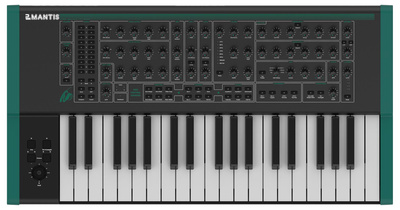
“I’ve been enjoying the Mantis greatly. It can be a work horse and do what I want from a mono synth but being able to hit the Quad button is very useful and changes everything,” said Paul Hartnoll of Orbital.
PWM says that Quad mode is achieved with re-engineered dynamic voice allocation. This voice allocation gives each voice separate VCAs and LFOs, with two main OSCs, a sub OSC, and a detune OSC. Therefore, in Quad mode there are 16 simultaneous OSCs playing. “It really is a four-voice polysynth!” says PWM.
Mantis only has two filters, not eight, so there are a few different ways that users can allocate the filters:
- Quad and Duo off: Monophonic mode with dual complex filter (two peaks)
- Quad off and Duo on: Duophonic mode with split simplified filters
- Quad on and Duo off: Quad mode with dual complex filter (two peaks)
- Quad and Duo on: Quad mode with split simplified filters
Firmware V1.25
Along with Quad mode, firmware V1.25 also includes general improvements and enhancements such as a re-engineered USB device driver, patch design Snapshot with up to 10 undos, a random patch generator, full sync for the arpeggiator and LFOs, and joystick vibrato depth MIDI control.
New PWM OSCar on the Way?
The press release for the firmware update also includes the announcement that OSC Ltd., also known as the Oxford Synthesizer Company, is now a member of PWGroup, that being PWM. Creator of the OSCar Chris Huggett worked on the Mantis before his passing so it makes sense that his former company would merge with PWM.
“We couldn’t talk about this until now but it was always our plan to create a modern version of the OSCar by Chris Huggett, the classic synth from 1984,” said PWM in press materials. “Today we also welcome OSC Ltd. to our group which solidifies the direct progression from OSCar to Mantis and beyond.”
It’s that “and beyond” part that has me intrigued. Is PWM working on a new OSCar? I asked PWM and Paul answered coyly, “I couldn’t possibly confirm or deny…”
Download the firmware V1.25 from the PWM site.
- PWM Mantis product page
PWM Mantis Hybrid Analogue Synthesizer: DCOs with analogue anger
[26 January 2024] Mantis is a duophonic hybrid synthesizer with two driftable digital oscillators, dual filters and an analogue signal path designed by the late Chris Huggett.
NAMM 2024 Update
Although it was promised before the end of last summer the Mantis is only just ready for NAMM. PWM had their first show-ready machines on demo and we can now get a proper look and a proper hear of what it’s all about.
New additions to the specs we saw at Superbooth include a Shape control for the Sine wave, which adds positive harmonics clockwise and negative harmonics the other way. There’s also an organ tone that has a similar ability. It’s got 100 presets accessed via the two rows of buttons and a new Quad Paraphonic mode where each oscillator throws out two notes giving some dual paraphonic polyphony… twice. But otherwise it’s all about the dual Oscar filters, digitally controlled oscillator and analogue signal path.
Anyway, here’s a decent demo with a glimpse at the sounds from NAMM.

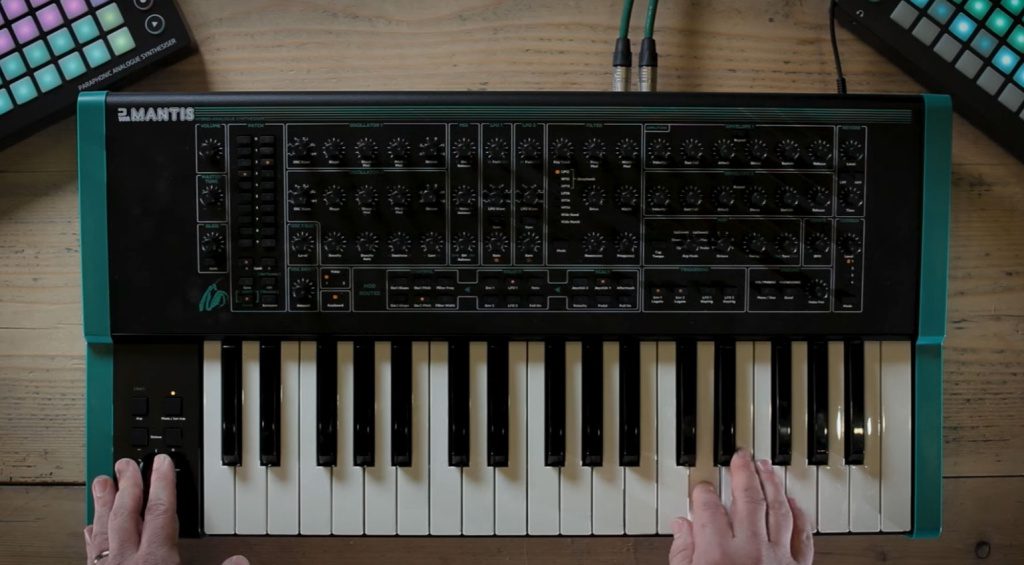

Mantis
Original post from 11th May 2023
The Mantis is an interesting hybrid synthesizer combining duophonic voicing with dual oscillators and dual filters. It has a modernised architecture based on the Wasp with an Oscar-style filter. This should be great!
The oscillators are digital, and there are two per voice, along with a sub-oscillator. Each oscillator can handle the usual sine, triangle, saw and square waveforms, but there’s also some shape control and pulse width modulation to find the waves between the waves. Each oscillator can be independently octaved. You’ve also got the rather lovely Oscillator Drift function which generates random pitch variations between oscillators. All of that sounds like a solid basis for a cool little synthesizer.
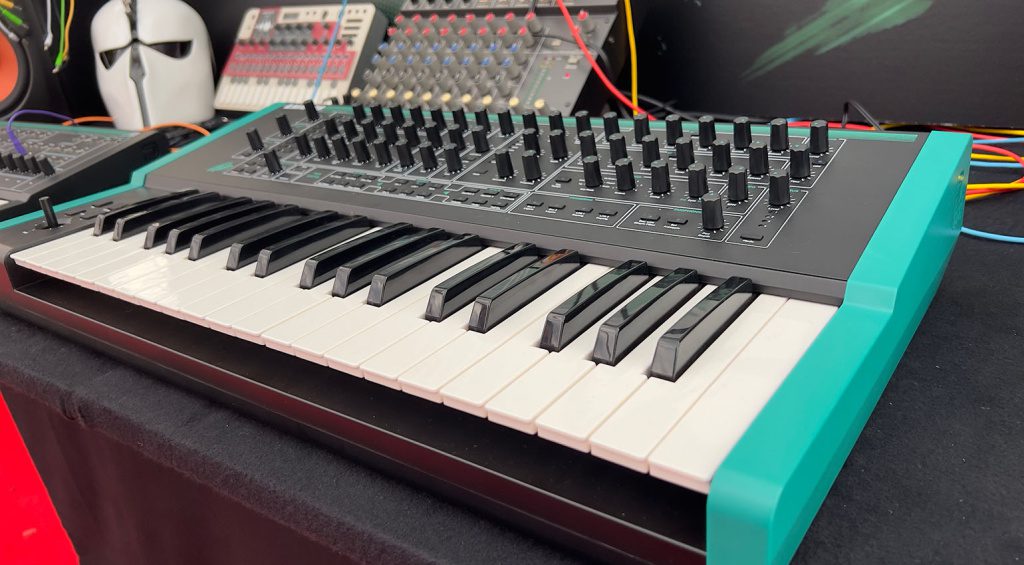
In the filter section we find two analogue filters. They are multi-mode state variable VCA filters that you can use in series or parallel. They come with lots of modulation possibilities and a good bit of overdrive.
For modulation we have two LFOs with different shapes and two independent ADSR envelopes. There’s a “Sustain Fall” parameter for shaping during key-down and a “Repeat” function that can be used to create looping envelopes. There are six sources and six destinations available via Modulation Routes.
Other features include a reverb-heavy digital effects engine, Arpeggiator, Ring Modulator, multi-function joystick and a full-sized semi-weighted 37-note keyboard with velocity and channel aftertouch.
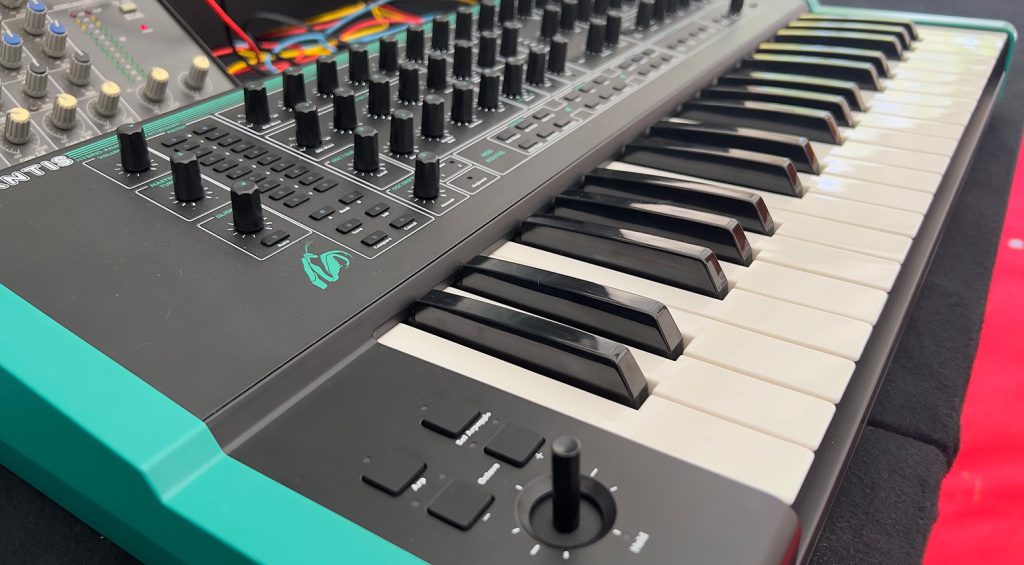
The layout looks very solid. I like the Patch interface and the ease with which you can setup the modulation. There’s no screen or data encoders which is often a plus in my book.
Chris Huggett
The Mantis was designed in collaboration with the late Chris Huggett. Chris was the engineer and designer who co-founded Electronic Dream Planet (EDP) where he designed the Wasp and Gnat synthesizers and the Spider sequencer. He went on to build the OSCar synthesizer, work at Akai and eventually developed filters and other technology for Novation. Sadly, Chris died of cancer in 2020. Paul Whittington of PWM talks about their collaboration in a video on the website.
Availability
Mantis should be available in the summer for £1349. Hopefully some sound demos will be along presently.
- PWM website.
- More from PWM.
3 responses to “PWM Mantis Is Now a Fully Polyphonic 4-Voice Synth!”

 4,1 / 5,0 |
4,1 / 5,0 | 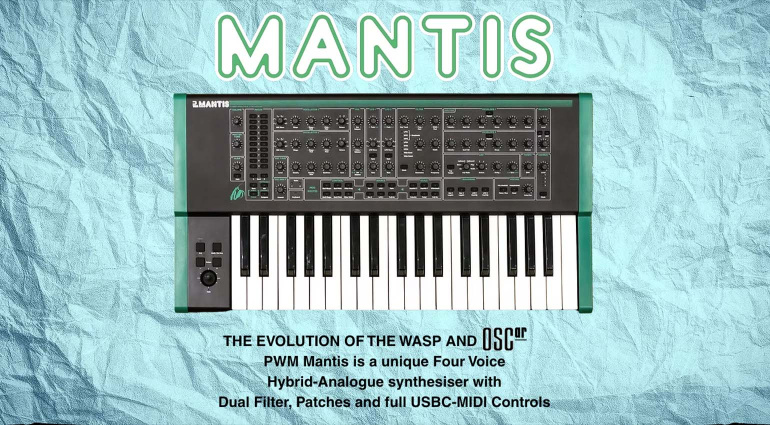






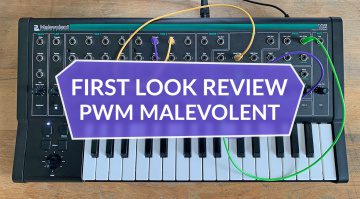
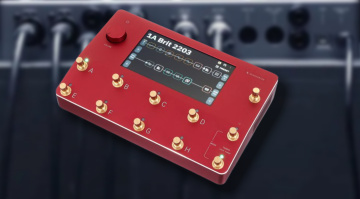
If you connect 2 Behringer Wasps, you can save up to 1000 bucks. But maybe this one is better, who knows….
Nice! I can’t remember using an Oscar in a studio, but I know the sound. There was one floating around in the 90s , and I can remember it looked beautiful. I don’t think it ever worked properly, so it’s great they’re going to remake/ remodel it.
Yet again, another piece happy misusing the word ‘polyphonic’ without IMMEDIATELY clarifying that it isn’t. In this case, it’s paraphonic (or more accurately, semi-paraphonic).
But once again, the caveat of it NOT being ‘full’ polyphonic comes well into the article.
After nearly 40 years of the word ‘polyphonic’ meaning FULL independent voices, it is misleading to not use the word ‘paraphonic’ (with additional text explaining if it is more than one VCF paraphonic but less than full polyphonic) to describe ANYTHING that doesn’t have fully independent voices.
40+ years of common usage (and virtually no paraphonic synths being made) have given the word ‘polyphonic’ a common, accepted and understood meaning.
PLEASE stop trying to muddy the waters when the word ‘paraphonic’ is well understood to mean less than full polyphonic independent voices.